The Analysis of Changes in the Crystal Structure of Near-Beta Titanium Alloy in the Solution-Treated and Aged Conditions after Static Tensile Testing
Abstract
:1. Introduction
2. Materials and Methods
3. Research Results
4. Discussion
Author Contributions
Funding
Data Availability Statement
Acknowledgments
Conflicts of Interest
References
- Banerjee, D.; Williams, J.C. Perspectives on Titanium Science and Technology. Acta Mater. 2013, 61, 844–879. [Google Scholar] [CrossRef]
- Okazaki, Y.; Gotoh, E. Implant Applications of Highly Corrosion-Resistant Ti-15Zr-4Nb-4Ta Alloy. Mater. Trans. 2002, 43, 2943–2948. [Google Scholar] [CrossRef] [Green Version]
- Wen, M.; Wen, C.; Hodgson, P.; Li, P. Improvement of the biomedical properties of titanium using SMAT and thermal oxidation. Colloids Surf. B Biointerfaces 2014, 116, 658–665. [Google Scholar] [CrossRef]
- Ahmed, M.; Pereloma, E.V. Observation of simultaneous operation of deformation twins in both α and β phases in metastable β titanium alloy. J. Alloy. Compd. 2022, 910, 164794. [Google Scholar] [CrossRef]
- Zhu, X.; Fan, Q.; Wang, D.; Gong, H.; Gao, Y.; Yuan, J.; Chen, K.; Qian, F. Influence of twins found in adiabatic shear bands on dynamic recrystallization of a near β Ti-5.5Mo-7.2Al-4.5Zr-2.6Sn-2.1Cr alloy. Mater. Sci. Eng. A 2022, 842, 143084. [Google Scholar] [CrossRef]
- Zhao, Q.; Bolzoni, L.; Chen, Y.; Xu, Y.; Torrens, R.; Yang, F. Processing of metastable beta titanium alloy: Comprehensive study on deformation behaviour and exceptional microstructure variation mechanisms. J. Mater. Sci. Technol. 2022, 126, 22–43. [Google Scholar] [CrossRef]
- Zhao, J.; Zhong, J.; Yan, F.; Chai, F.; Dargusch, M. Deformation behaviour and mechanisms during hot compression at supertransus temperatures in Ti-10V-2Fe-3Al. J. Alloy. Compd. 2017, 710, 616–627. [Google Scholar] [CrossRef] [Green Version]
- Sinyakova, E.; Panin, A.; Perevalova, O.; Shugurov, A.; Kalashnikov, M.; Teresov, D. The effect of phase transformations on the recovery of pulsed electron beam irradiated Ti-6Al-4V titanium alloy during scratching. J. Alloy. Compd. 2019, 795, 275–283. [Google Scholar] [CrossRef]
- Ellyson, B.; Fezzaa, K.; Sun, T.; Parab, N.; Saville, A.; Finfrock, C.; Rietema, C.; Smith, D.; Copley, J.; Johnson, C.; et al. Transformation and twinning induced plasticity in metastable Ti-Mo alloys under high strain rate deformation. Mater. Sci. Eng. A 2022, 857, 143716. [Google Scholar] [CrossRef]
- Wu, Z.; Kou, H.; Chen, N.; Zhang, Z.; Qiang, F.; Fan, J.; Tang, B.; Li, J. The effect of cubic-texture on fatigue cracking in a metastable β titanium alloy subjected to high-cycle fatigue. Int. J. Fatigue 2020, 141, 105872. [Google Scholar] [CrossRef]
- Chen, K.; Fan, Q.; Yang, L.; Yao, J.; Xu, S.; Lei, W.; Gao, Y. Deciphering the microstructural evolution and adiabatic shearing behavior of the titanium alloy with stress-induced ω phase transformation during dynamic compression. Mater. Des. 2022, 221, 110939. [Google Scholar] [CrossRef]
- Zhang, J.; Qian, B.; Lin, W.; Zhang, P.; Wu, Y.; Fu, Y.; Fan, Y.; Chen, Z.; Cheng, J.; Li, J.; et al. Compressive deformation-induced hierarchical microstructure in a TWIP β Ti-alloy. J. Mater. Sci. Technol. 2022, 112, 130–137. [Google Scholar] [CrossRef]
- Li, C.; Huang, L.; Zhao, M.; Guo, S.; Li, J. Hot deformation behavior and mechanism of a new metastable β titanium alloy Ti–6Cr–5Mo–5V–4Al in single phase region. Mater. Sci. Eng. A 2021, 814, 141231. [Google Scholar] [CrossRef]
- Fan, X.; Zhang, Y.; Gao, P.; Lei, Z.; Zhan, M. Deformation behavior and microstructure evolution during hot working of a coarse-grained Ti-5Al-5Mo-5V-3Cr-1Zr titanium alloy in beta phase field. Mater. Sci. Eng. A 2017, 694, 24–32. [Google Scholar] [CrossRef]
- Chuan, W.; Liang, H. Hot deformation and dynamic recrystallization of a near-beta titanium alloy in the β single phase region. Vacuum 2018, 156, 384–401. [Google Scholar] [CrossRef]
- Fan, J.; Kou, H.; Lai, M.; Tang, B.; Chang, H.; Li, J. Hot deformation mechanism and microstructure evolution of a new near β titanium alloy. Mater. Sci. Eng. A 2013, 584, 121–132. [Google Scholar] [CrossRef]
- Lu, T.; Dan, Z.-H.; Li, T.-J.; Dai, G.-Q.; Sun, Y.-Y.; Guo, Y.-H.; Li, K.; Yi, D.-Q.; Chang, H.; Zhou, L. Flow softening and microstructural evolution of near β titanium alloy Ti-35421 during hot compression deformation in the α+β region. J. Mater. Res. Technol. 2022, 19, 2257–2274. [Google Scholar] [CrossRef]
- Matsumoto, H.; Kitamura, M.; Li, Y.; Koizumi, Y.; Chiba, A. Hot forging characteristic of Ti–5Al–5V–5Mo–3Cr alloy with single metastable β microstructure. Mater. Sci. Eng. A 2014, 611, 337–344. [Google Scholar] [CrossRef]
- Chen, Z.-Q.; Xu, L.-J.; Cao, S.-Z.; Yang, J.-K.; Zheng, Y.-F.; Xiao, S.-L.; Tian, J.; Chen, Y.-Y. Characterization of hot deformation and microstructure evolution of a new metastable β titanium alloy. Trans. Nonferrous Met. Soc. China 2022, 32, 1513–1529. [Google Scholar] [CrossRef]
- Chen, J.; Li, J.; Tang, B.; Chen, Y.; Kou, H. Microstructure and texture evolution of a near β titanium alloy Ti-7333 during continuous cooling hot deformation. Prog. Nat. Sci. 2019, 29, 50–56. [Google Scholar] [CrossRef]
- Chen, Y.; Li, J.; Tang, B.; Kou, H.; Xue, X.; Cui, Y. Texture evolution and dynamic recrystallization in a beta titanium alloy during hot-rolling process. J. Alloy. Compd. 2015, 618, 146–152. [Google Scholar] [CrossRef]
- Wang, J.; Wang, K.; Lu, S.; Li, X.; OuYang, D.; Qiu, Q. Softening mechanism and process parameters optimization of Ti-4.2Al-0.005B titanium alloy during hot deformation. J. Mater. Res. Technol. 2022, 17, 1842–1851. [Google Scholar] [CrossRef]
- Chen, W.; Wang, H.; Lin, Y.C.; Zhang, X.; Chen, C.; Lv, Y.; Zhou, K. The dynamic responses of lamellar and equiaxed near β-Ti alloys subjected to multi-pass cross rolling. J. Mater. Sci. Technol. 2020, 43, 220–229. [Google Scholar] [CrossRef]
- Chen, W.; Yang, S.; Lin, Y.; Chen, C.; Zhang, X.; Zhou, K. Multi-scale characterization of deformation features and precipitation behavior in a near β-Ti alloy. Mater. Charact. 2020, 169, 110637. [Google Scholar] [CrossRef]
- Zhu, X.; Fan, Q.; Wang, D.; Gong, H.; Gao, Y.; Qian, F.; Jin, S.; Sha, G. A new dynamic recrystallization mechanism in adiabatic shear band of an α/β dual phase titanium alloy: Composition redistribution. Scr. Mater. 2022, 206, 114229. [Google Scholar] [CrossRef]
- Furuhara, T.; Poorganji, B.; Abe, H.; Maki, T. Dynamic recovery and recrystallization in titanium alloys by hot deformation. JOM 2007, 59, 64–67. [Google Scholar] [CrossRef]
- Ning, Y.; Luo, X.; Liang, H.; Guo, H.; Zhang, J.; Tan, K. Competition between dynamic recovery and recrystallization during hot deformation for TC18 titanium alloy. Mater. Sci. Eng. A 2015, 635, 77–85. [Google Scholar] [CrossRef]
- Wang, H.; Ge, J.; Zhang, X.; Chen, C.; Zhou, K. Investigation of the Dynamic Recovery and Recrystallization of Near-β Titanium Alloy Ti-55511 during Two-Pass Hot Compression. Metals 2021, 11, 359. [Google Scholar] [CrossRef]
- Li, J.; Dong, R.; Kou, H.; Fan, J.; Zhu, B.; Tang, B. Texture evolution and the recrystallization behavior in a near β titanium alloy Ti-7333 during the hot-rolling process. Mater. Charact. 2020, 159, 109999. [Google Scholar] [CrossRef]
- Gu, B.; Chekhonin, P.; Schaarschuch, R.; Oertel, C.-G.; Xin, S.; Ma, C.; Zhou, L.; Gan, W.; Skrotzki, W. Microstructure, texture and hardness of a metastable β-titanium alloy after bar-rolling and annealing. J. Alloy. Compd. 2020, 825, 154082. [Google Scholar] [CrossRef]
- Krawczyk, J.; Tokarski, T.; Łukaszek-Sołek, A.; Dąbrowski, R.; Śleboda, T.; Lypchanskyi, O. Dynamic Recrystallization in Titanium Alloys. Key Eng. Mater. 2016, 687, 47–54. [Google Scholar] [CrossRef]
- Lypchanskyi, O.; Śleboda, T.; Wojtaszek, M.; Muszka, K.; Łukaszek-Sołek, A.; Stanik, R.; Gude, M. The analysis of flow behavior of Ti-6Al-2Sn-4Zr-6Mo alloy based on the processing maps. Int. J. Mater. Form. 2020, 14, 523–532. [Google Scholar] [CrossRef] [Green Version]
- Zhang, C.; Jiang, X.; Han, J.; Zhang, S.; Peng, P.; Feng, H.; Wang, T.; Cao, P. Probing the texture transition sequence of near β titanium matrix composites by observing the uneven hot deformation microstructure. Mater. Charact. 2023, 198, 112728. [Google Scholar] [CrossRef]
- Nasirpouri, F.; Sanaeian, M.R.; Samardak, A.S.; Sukovatitsina, E.V.; Ognev, A.V.; Chebotkevich, L.A.; Hosseini, M.-G.; Abdolmaleki, M. An investigation on the effect of surface morphology and crystalline texture on corrosion behavior, structural and magnetic properties of electrodeposited nanocrystalline nickel films. Appl. Surf. Sci. 2014, 292, 795–805. [Google Scholar] [CrossRef]
- Zhao, Z.B.; Zhang, B.H.; Sun, H.; Wang, Q.J.; Liu, J.R.; Yang, R. Influence of Globularization Process on Local Texture Evolution of a Near-a Titanium Alloy with a Transformed Microstructure. Metall. Mater. Trans. A 2014, 54A, 2849–2857. [Google Scholar] [CrossRef]
- Du, Z.; Liu, J.; Jiang, S.; Xiao, S.; Kong, F.; Chen, Y. Strain rate dependence of microstructural evolution in β titanium alloy during subtransus superplastic deformation. J. Alloy. Compd. 2015, 647, 1–5. [Google Scholar] [CrossRef]




| Elements | Al | V | Cr | Zr | Mo |
|---|---|---|---|---|---|
| Nominal content | 3.0–4.0 | 7.5–8.5 | 5.5–6.5 | 3.5–4.5 | 3.5–4.5 |
| Actual content | 3.46 | 8.19 | 6.41 | 4.15 | 4.17 |
| TBe Alloy Sample | Solution Treatment | Aging |
|---|---|---|
| TBe-S | 950 °C/1 h | - |
| TBe-A450 | 950 °C/1 h | 450 °C/2 h |
| TBe-A500 | 950 °C/1 h | 500 °C/2 h |
| TBe-A550 | 950 °C/1 h | 550 °C/2 h |
| TBe Alloy | TS (MPa) | YS (MPa) | YS/TS (%) | E (GPa) | δ (%) | EL (%) | RA (%) |
|---|---|---|---|---|---|---|---|
| TBe-S | 853 | 849 | 99.5 | 182 | 0.47 | 9.9 | 60.2 |
| TBe-A450 | 879 | 873 | 99.3 | 168 | 0.52 | 10.4 | 53.3 |
| TBe-A500 | 869 | 865 | 99.5 | 171 | 0.51 | 9.6 | 43.7 |
| TBe-A550 | 865 | 864 | 99.9 | 163 | 0.53 | 14.2 | 52.9 |
| Material Condition | Before Plastic Deformation | After Plastic Deformation | ||
|---|---|---|---|---|
| Pole Figures | Measured | Calculated | Measured | Calculated |
| Supersaturation 950 °C/1 h | 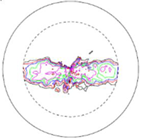 |  | 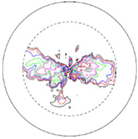 |  |
| Supersaturation 950 °C/1 h Aging 450 °C/2 h |  |  |  | 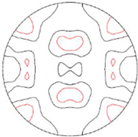 |
| Supersaturation 950 °C/1 h Aging 500 °C/2 h |  |  | 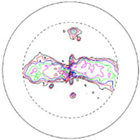 | 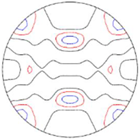 |
| Supersaturation 950 °C/1 h Aging 550 °C/2 h | 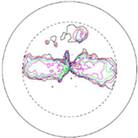 |  | 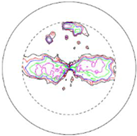 |  |
Disclaimer/Publisher’s Note: The statements, opinions and data contained in all publications are solely those of the individual author(s) and contributor(s) and not of MDPI and/or the editor(s). MDPI and/or the editor(s) disclaim responsibility for any injury to people or property resulting from any ideas, methods, instructions or products referred to in the content. |
© 2023 by the authors. Licensee MDPI, Basel, Switzerland. This article is an open access article distributed under the terms and conditions of the Creative Commons Attribution (CC BY) license (https://creativecommons.org/licenses/by/4.0/).
Share and Cite
Krawczyk, J.; Frocisz, Ł.; Goły, M.; Tomasik, S.; Śleboda, T. The Analysis of Changes in the Crystal Structure of Near-Beta Titanium Alloy in the Solution-Treated and Aged Conditions after Static Tensile Testing. Crystals 2023, 13, 1223. https://doi.org/10.3390/cryst13081223
Krawczyk J, Frocisz Ł, Goły M, Tomasik S, Śleboda T. The Analysis of Changes in the Crystal Structure of Near-Beta Titanium Alloy in the Solution-Treated and Aged Conditions after Static Tensile Testing. Crystals. 2023; 13(8):1223. https://doi.org/10.3390/cryst13081223
Chicago/Turabian StyleKrawczyk, Janusz, Łukasz Frocisz, Marcin Goły, Sylwia Tomasik, and Tomasz Śleboda. 2023. "The Analysis of Changes in the Crystal Structure of Near-Beta Titanium Alloy in the Solution-Treated and Aged Conditions after Static Tensile Testing" Crystals 13, no. 8: 1223. https://doi.org/10.3390/cryst13081223






